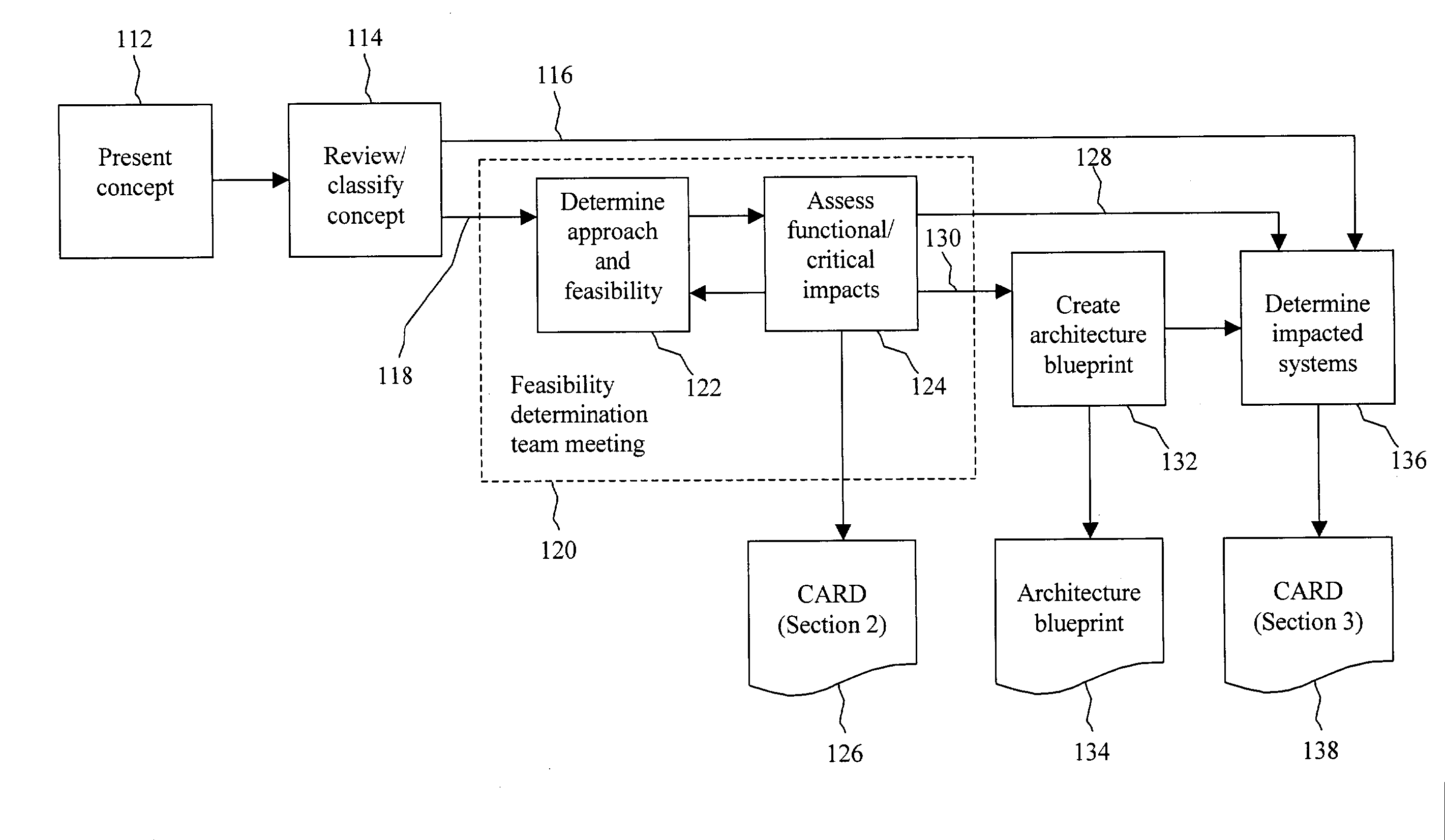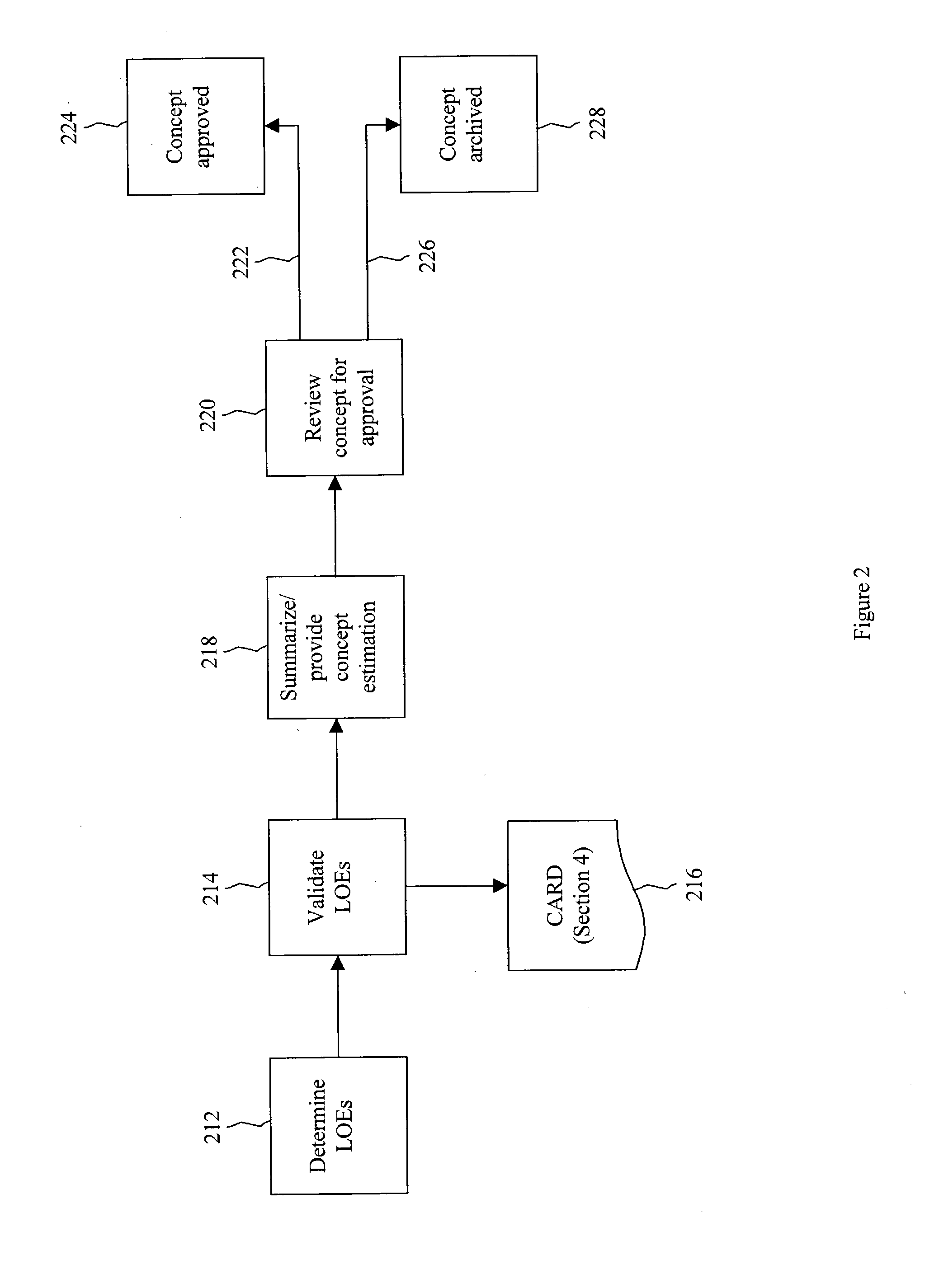Defining and sizing feasible approaches to business needs within an integrated development process
a feasible approach and development process technology, applied in the direction of data processing applications, instruments, electric programme control, etc., can solve the problems of affecting the integration of the whole system, and requiring more effort to connect than to add new functionality
- Summary
- Abstract
- Description
- Claims
- Application Information
AI Technical Summary
Benefits of technology
Problems solved by technology
Method used
Image
Examples
Embodiment Construction
[0021] An Enterprise Development Process (EDP) can be employed to facilitate the integration of enterprise architecture. EDP provides rigor to the process of enterprise-wide software development while accommodating flexibility. Consistent checkpoints throughout the process allow significant events to occur in a predictable, scheduled manner. The process typically comprises five phases: Define, Discover, Design, Develop, and Deploy. In the preferred embodiment, an additional sixth phase is a Demand phase that addresses reactive and proactive maintenance of operational systems and feedback for long-term optimization.
[0022] The Define phase encompasses processes that define the business intent and concepts that are aligned with the business intent. Among the business needs that can be addressed by the Define phase are new product / service offerings, enhancements to existing product / service offerings, infrastructure buildout and / or process improvement opportunities. Robust concept defin...
PUM
 Login to View More
Login to View More Abstract
Description
Claims
Application Information
 Login to View More
Login to View More - R&D
- Intellectual Property
- Life Sciences
- Materials
- Tech Scout
- Unparalleled Data Quality
- Higher Quality Content
- 60% Fewer Hallucinations
Browse by: Latest US Patents, China's latest patents, Technical Efficacy Thesaurus, Application Domain, Technology Topic, Popular Technical Reports.
© 2025 PatSnap. All rights reserved.Legal|Privacy policy|Modern Slavery Act Transparency Statement|Sitemap|About US| Contact US: help@patsnap.com



